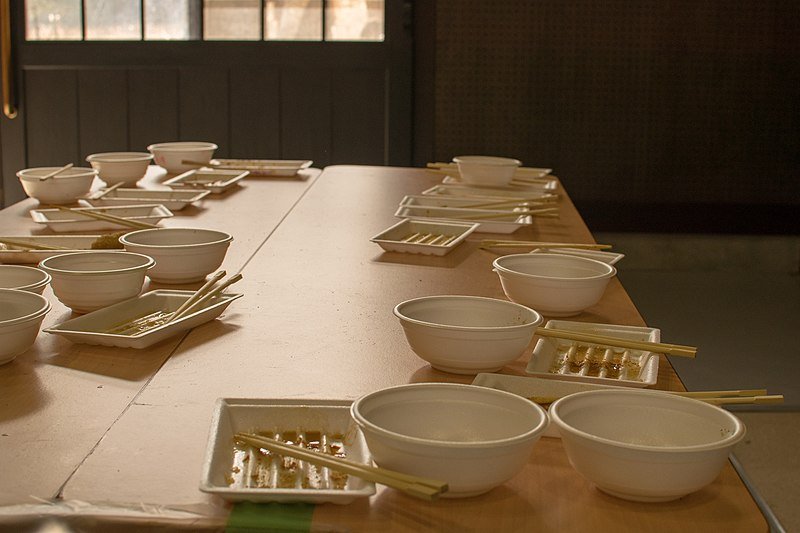Globally, plastic has been the material of choice for product packaging. Since the 1950s, it has enabled businesses to sell. Create eye-catching packages, reduce retail loss. And ship items at a reasonable cost around the globe.
Aware consumer groups and local governments are very interested. In the issue of plastic pollution.
It is now estimated that the Great Pacific Garbage Patch is twice the size of Texas. And comprising in large part of plastic packaging for food, beverages. And other consumer discretionary items. With an average usable life of fifteen minutes. It contributes to over 60% of global beach litter.
Owing to the abovementioned problems. The importance of shifting our dependence on finding alternatives to single-use plastic utensils. Which is increasing worldwide, which is also highlighted in this article.

The Importance of Quest to Adopt Alternatives to Single-Use Plastic Utensils
Despite being a material designed to last forever. 33 percent of all plastic – including water bottles, bags, and straws. These are only used once before throwing out. Plastic ; instead, it degrades over time into ever-tinier fragments.
Plastic waste can linger in the environment for up to 2,000 years. Plastic offers several risks to human health throughout this process. Including groundwater contamination, the release of hazardous chemicals. And microplastic particles into the food chain. These harmful aspects force the authorities. To find alternatives to this tradition and in-vogue plastics.

Legislations that Bar the Use of Traditional Plastics
Since local and federal governments began to realize. The wastefulness of single-use plastic bags over the past ten years. And adopted legislation (China outlawed free plastic bags in 2008; California in 2015). Attention has recently shifted to single-use plastic straws and utensils.
There increasing accounts for staggering amounts of waste each year. American consumers use and discard 500 million straws daily. And Starbucks recently declared it would phase out plastic straws by 2020.
Estimation of Waste produced by Single-Ware Plastics
Each year, more than 40 billion plastic knives, forks, and spoons using in the United States alone. Five hundred billion single-use plastic utensils production worldwide each year. Due to the hygienic nature of plastic utensils. And their low cost of production, millions of fast food outlets. And grocery stores contribute to the explosion in waste.
It is critical to discover alternate, responsible. And viable alternatives, given that most Utensils made of plastic. These wind up in landfills or the ocean.
Difficult Recycling Process
Although the two types of plastic most used to make utensils. Polypropylene and polystyrene, are recyclable. Most recycling facilities won’t accept them since they are difficult to process. And aren’t profitable to recycle on a per-unit basis.

Finding Alternatives to Single-ware Plastics are Crucial for Economy
Over 40% of the plastic waste generated worldwide importing into China. For processing and disposal fee-based for three decades. China, but, prioritized protecting the environment and implemented a “Green Fence” policy. That forbade the entry of plastic waste moving forward as of January 2018.
Since the 80+ trash-burning plants functioning in the US will not accept the types of plastic. Such as used in the forks, spoons, and knives of the QSR (quick-service restaurant) industry. the only choice left for US businesses is to dispose of plastic in landfills. which is currently a costly option.
Thus, finding sustainable alternatives to plastic utensils. It is also urgent from infrastructure and economic standpoint. Most of the plastic garbage from North America and Europe. Was until recently transported to China by container ship for processing and disposal.
Some Forceful Ordinances to Discourage Single-ware Plastics’ usage
The city of Malibu became the first US municipality. to outlaw plastic eating utensils. Laws have banned using straws and other utensils. In bars and restaurants in Seattle following suit.
The state of California’s AB-1884 law, which, if passed. Will must that straws offering to customers only upon request. Is one of several other places with pending legislation?
Unfortunately, none of the substitutes for petroleum-based plastic. That food service companies have used to follow the new rules are sustainable.
Some Sustainable Alternative to Disposable Plastics
“bioplastics” refers to a group of plastics that degrade. The production of PLA (polylactic acid) and PHA (polyhydroxyalkanoates). Two used bioplastics, depends on a chemical polymerization reaction. That changes corn or sugarcane.
There is significant material waste at the manufacturing site. Since only 50% of the raw material converting into the finished bio-plastic product.
Cellulose, which comes from wood, bamboo, and palm, is an extra material choice. Utensils made of bamboo and palm transporting from Asia. Which results in sizeable transportation-related carbon emissions.
Fast-growing tree species replanted. Are a potential supply of raw material for wooden kitchenware? They are furniture makers’ leftover wood products. Before harvesting, bamboo needs to grow for roughly five years.


Protection of Cellulose-Based Dinnerware and its Natural Decay
Although cellulose-based materials are natural. We must treat them with Sulphur dioxide or hydrogen peroxide. Before using to prevent bacterial and fungal contamination. Studies have indicated that these chemical agents have adverse implications for human health.
Since recycling is impossible. As it takes years for cellulose materials to break down in an anaerobic landfill. The only plant-nutritive output of wood or bamboo products. This is a composting environment is plain carbon. Which may take many months to disintegrate. In short, while semi-sustainable, wood and bamboo. These are not the best materials for single-use, throw-away cutlery.
Biodegradable PLA Plastics are the Best Alternative to Single-ware Plastics
The best alternative to single-ware plastics is Polylactic acid or PLA. PLA uses to make biodegradable polymers, sometimes known as bioplastics or plant-based products. While soured corn is generally used in their production. By using potatoes, wheat, and barley.
But, most maize used in their production comes from altered seeds. A division of Cargill, the world’s largest supplier of GMO seed, is the largest PLA producer.
As they come from renewable, carbon-absorbing plants. And don’t release poisonous emissions when burned. Biodegradable plastics considering “carbon neutral” materials. In contrast, it takes a long time for PLA to degrade unless PLA is composting in a controlled setting.
Most of us don’t have access to an industrial composting facility. That feeds with digestive bacteria and heated to 140 degrees. Only 113 facilities in the United States compost at an industrial level. Without those conditions. PLAs can disintegrate in landfills between 100 and 1,000 years.

Conclusion
By concluding the above discussion. We concluded that many health and environmental risks. Linking with using conventional single-ware plastics. What we can do is make use of certain degradable plastics such as PLA. Which are the best alternative to single-ware plastics.
Moreover, researchers have proposed several alternatives. Including wood, bamboo, and cellulose-based plastics, to discourage the use of Single-ware plastics. But their cons overwhelm the benefits. So they are not the greatest choice compared with PLA plastics.


